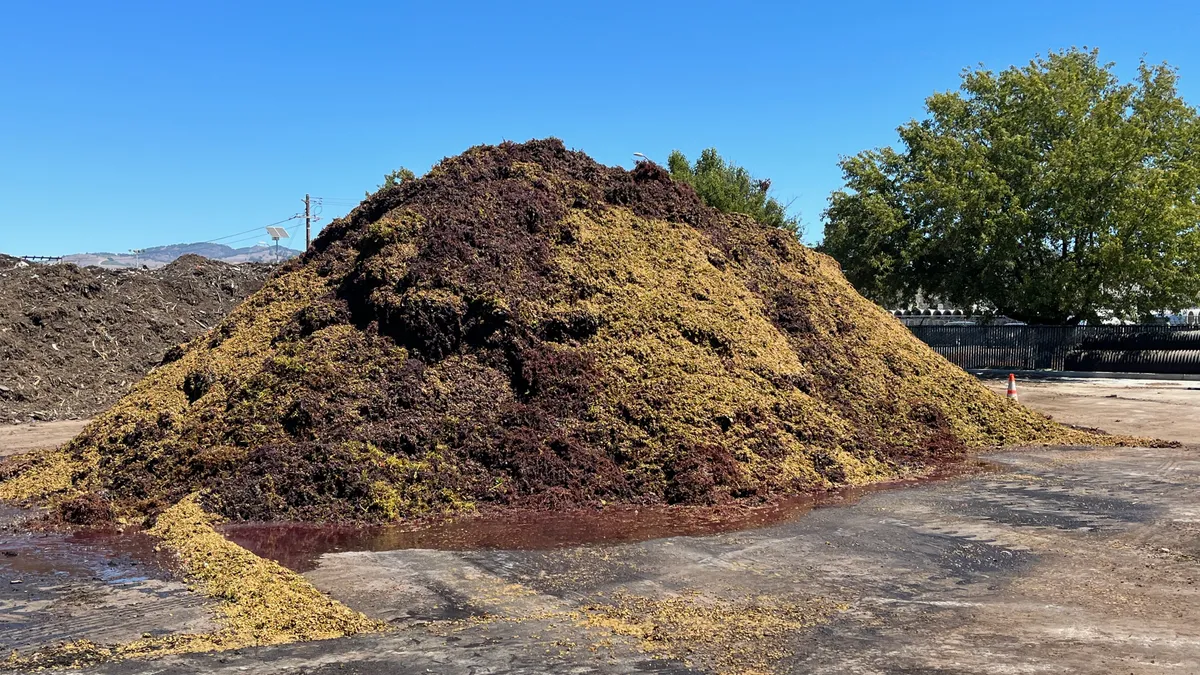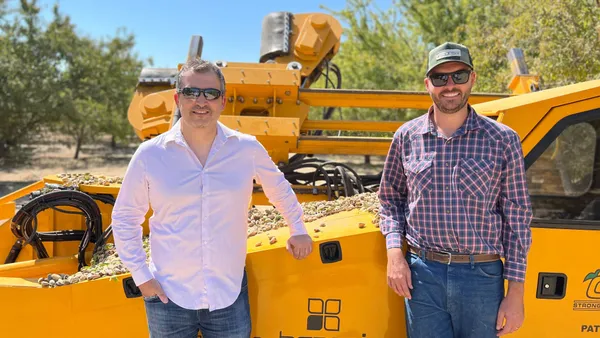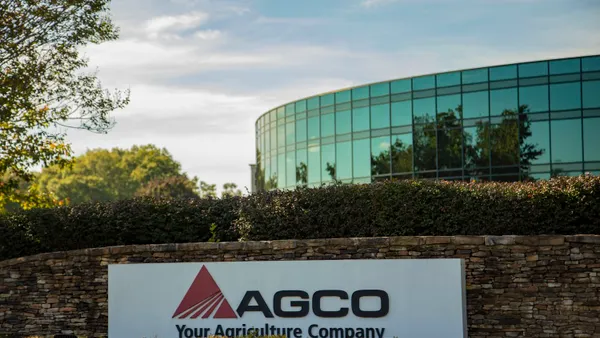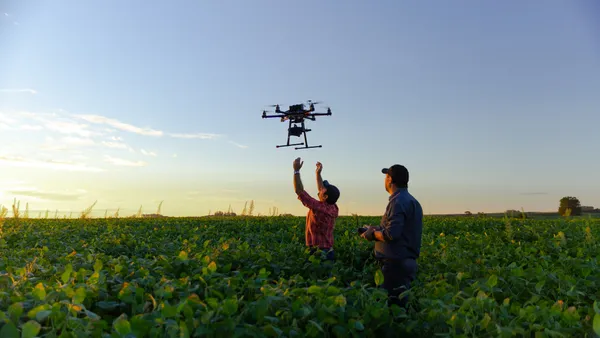Dive Brief:
- The Biodegradable Products Institute filed a petition with the U.S. Department of Agriculture on Tuesday urging the agency to update its definition of composting and set a definition for composting feedstocks, hoping to make it easier for facilities to accept food scraps and sell their product to farms.
- Existing definitions allow for certain contaminants like plastic mulch lining and produce stickers to slip into compost as long as operators make a reasonable effort to remove them, but compostable packaging that passes certification still isn’t allowed under USDA organic agriculture rules, said Rhodes Yepsen, executive director of BPI.
- While the federal government and USDA have advocated for biomass-derived materials and “climate-smart agriculture,” the current federal definition could undermine state and local efforts to improve the circularity of packaging and ramp up food scrap diversion in places like California and Washington. “That’s put things on a collision course,” Yepsen said.
Dive Insight:
The existing definition of compost under the USDA’s National Organic Program defines it narrowly as a material derived from plant and animal matter. Yepsen said that regulations for composting are “out of date,” set more than 20 years ago at a time when the federal government thought of composting mostly as an agricultural practice.
In a release announcing BPI’s petition, Frank Franciosi, executive director of the U.S. Composting Council, touted composting’s ability to turn methane-producing waste into a “valuable soil amendment,” but noted current federal policy is holding the practice back.
“If we want to reduce greenhouse gas emissions from landfills and return nutrients to the soil for regenerative agriculture, then we need specific scientific definitions of the composting process, compost feedstocks, and finished compost product that align with states that are leading the way,” Franciosi said.
Under existing regulations, composters must make an effort to remove materials in their composting operation that are not raw manure, composted plant and animal materials or uncomposted plant materials. But in today’s composting world, feedstocks can include pre- and postconsumer waste that may include certain amounts of packaging or other contaminants.
More pressingly, in California, packaging labeled as compostable must be approved for use in organic agriculture by the National Organic Program beginning in 2026. But the federal program doesn't have any set rules regarding compostable packaging today, meaning manufacturers and composters expect it will be difficult to comply with the state law.
The USDA’s reviewers who certify compost for organic agriculture have leniency in determining acceptable levels of site-specific variation in composting feedstock, according to guidance issued by the agency in 2011. But Yepsen said there’s wide variability in the leniency of reviewers to allow other materials that are compostable, like the kind of packaging his organization certifies. Without permission to accept certain compostable products as feedstock, facilities can’t sell their compost to organic agriculture operations, taking away one of the industry’s largest customers at what many are hoping is a critical time of growth, he said.
“The compost industry has taken a firm stance in California to say yes, we need to get 75% of organics out of landfills. Yes, we need to figure out a way to support the state's goals of all packaging being reusable, recyclable or compostable. But today, the lack of clarity around this means that something as small as redesigning the common contaminant of a product sticker to be compostable — which we now have BPI-certified produce stickers — would disallow that compost from organic agriculture,” Yepsen said.
Other jurisdictions, like Seattle, have also set goals regarding the compostability of packaging. In a statement, Kate Kurtz, a program lead with Seattle Public Utilities’ organics team, said food scrap bags used by city residents could also be ensnared in the mismatch between federal and local definitions of compostability.
“Rules that limit composters from taking these materials create barriers for food scrap collection programs,” Kurtz said.
BPI is asking USDA to set specific performance criteria for materials that can be acceptable feedstock in compost, likely using ASTM specifications for compostability. Yepsen said the USDA has previously used criteria from the standards-setting organization in other aspects of the National Organic Program.
Interested in more waste news? Sign up for Waste Dive’s newsletter today.












